US Lawmakers Urge Blocking Entry To Iranian Officials
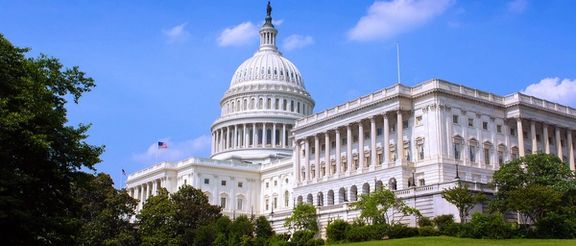
In a letter to the State Department, 27 members of the House of Representatives have urged the Biden administration to ban the entry of Iranian officials to the United States.

In a letter to the State Department, 27 members of the House of Representatives have urged the Biden administration to ban the entry of Iranian officials to the United States.
“We must not offer the Iranian regime the privilege of setting foot on US soil or the validation of speaking at the United Nations,” read the bipartisan letter addressed to Secretary of State Antony Blinken.
The lawmakers referred to the involvement of Iranian President Ebrahim Raisi in the massacre of thousands of political prisoners in 1988 and his current role in suppressing dissidents in the country, calling for “the denial of visas to President Raisi and any government officials or organizations connected to the regime.”
In 1988, Raisi was a member of an ad hoc judicial committee known as the “Death Commission,” responsible for deciding the fates of prisoners during summary trials that were held in secret.
According to the bipartisan group, the Iranian government continues to destabilize the region by funding, training and supplying its proxies, such as Hamas, Yemeni Houthis and Hezbollah, which target American forces in the region and seek to destroy Washington’s ally, Israel.
“The barbaric October 7, 2023, attack on Israel was a stark wake-up call about the threats Iranian-backed terrorist groups pose to both Israelis and Americans,” the letter added.
Over the past years and particularly, following the 2022 nationwide uprising, Iranian political activists and opposition figures have called on Western countries not to issue visas for regime officials and block their presence in international organizations.
Back in January, the World Economic Forum was urged to revoke its invitation to Iran’s Foreign Minister Hossein Amir-Abdollahian over his close links to the IRGC.
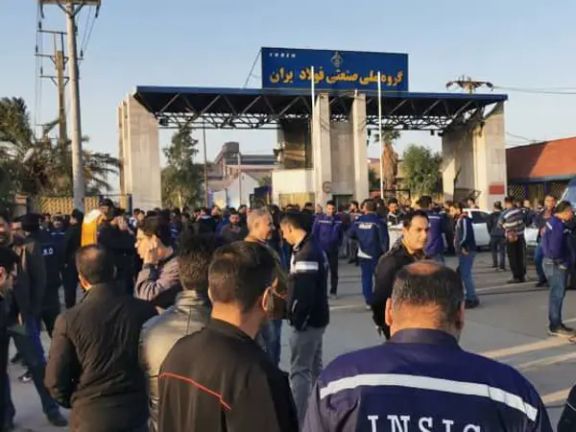
As the new Iranian year commenced on March 20, the Iranian press overflowed with complaints, criticism of the government, and dire economic forecasts.
A video released by Etemad online, showed prominent cleric Alavi Boroujerdi speaking out against the government regarding the people's challenging circumstances. He protested that "The people are no longer able to endure the economic hardships," and pointed out that "the clerics are being held responsible for all their troubles."
Boroujerdi also criticized the government for the way it is running the affairs of the state. He said: "The people's economic situation is very bad. Bring in a few honest experts to address the problems as people's patience has come to an end."
Meanwhile, in an interview with Rouiydad24 website, labor activist Hassan Sadeghi warned the government about a fast approaching 67-percent inflation rate in the new year. Sadeghi also warned that the price of gasoline is also going to rise in the new year. The latest gasoline price increase by the government in 2019 led to nationwide protests in Iran during which security forces reportedly killed around 1,500 Iranians.
Sadeghi lamented the state of the country's economy, criticizing the decision to entrust economic matters to individuals lacking adequate expertise in the field of economics. He cautioned that with inexperienced non-experts overseeing the nation's economy, the Iranian currency is poised to face further devaluation in the upcoming New Year, beginning on March 20.

Expressing concern, Sadeghi cautioned that these developments could precipitate crises, including widespread protests in Iran in the coming year. He highlighted the anticipated impact of inflation and rising prices, particularly on the most vulnerable segments of the population. Additionally, he noted that the heavy reliance on taxation in the government's budget for the New Year is likely to exacerbate the inflationary pressures.
Furthermore, Sadeghi suggested that the Iranian government should take cues from Turkey's approach and adjust wages to keep pace with the rise in inflation. However, talks between the government and representatives of workers yielded no progress on the eve of the New Year.
In another development, former Central Bank Governor Abdolnaser Hemmati, who was President Ebrahim Raisi's rival in the 2021 presidential election, wrote in a tweet: "Government officials are lauding each other for achieving a 4 percent economic growth rate, even as the official inflation rate stands at a staggering 42 percent. Hemmati pointed out that "in 2020, despite facing intense pressure from the US and grappling with the pandemic, Iran managed to achieve a 4.2 percent economic growth, with meager oil revenue of only $7.4 billion." This achievement is particularly noteworthy considering that Iran faced fewer obstacles in exporting oil last year, resulting in oil revenues exceeding $30 billion."
In an earlier letter to the Iranian President, Hemmati had told Raisi that "With the plan you called 'economic surgery' you created a triple-digit inflation rate for commodities such as meat, poultry, and dairy products people need on a daily basis.”
He addressed Raisi directly, stating, "You recently expressed your desire for a headline in the press that reflects the government's empowerment of Iran! But can we truly consider the sharp decline in people's purchasing power, in a country endowed with the world's largest oil and gas resources, and the fact that over 30 percent of the population has fallen below the poverty line as indicators of a powerful nation?"
As evidence of the Iranian government's inefficiency, Hemmati highlighted that one year after the conclusion of Iran's 6th development plan, the country's 7th development plan remains unfinished. Additionally, just five days before the end of the current Iranian year, the government has yet to finalize the annual budget bill for the upcoming year.
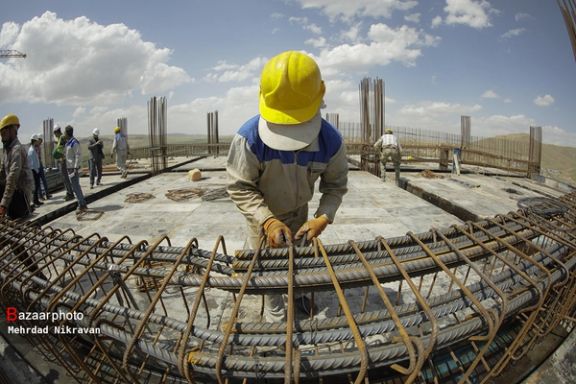
The head of the Supreme Council of Workers' Guilds in Iran has raised strong concerns about the inadequacy of the new minimum wage to cover living expenses for Iranian households.
Somayeh Golpour stated that “despite a 35 percent increase in the minimum wage, it still falls short of meeting 60% of household living costs when considering taxes, retirement deductions, and insurance.”
The minimum wage, set at approximately 110 million rials (about 175 USD) on March 19, has been deemed insufficient by labor representatives, leading them to abstain from endorsing the wage resolution proposed by the Supreme Labor Council. The government pushed through the below-inflation wage increase despite strong opposition by labor representatives.
The further fall of the national currency since January exacerbates the situation, with the minimum wage effectively stagnating in the new Iranian year (started on March 20). The predicament leaves millions of workers with minimal purchasing power, further compromising their living standards.
The reality is that the increase in the minimum wage lags significantly behind Iran's soaring inflation rate. Government-controlled sources estimate inflation at 43 percent, with food items experiencing even higher rates ranging from 80 to 100 percent. The imposition of economic sanctions by the United States in 2019 triggered a surge in inflation, compounding the financial hardships faced by Iranian wage earners.
Over the past six years, the Iranian rial has depreciated by a staggering 15-fold, reflecting the economic challenges gripping the nation and underscoring the urgency of addressing the widening gap between wages and living expenses for Iranian workers.

A passenger boat was seized in the waters of Bushehr Province, south of Iran in the Persian Gulf on grounds of non-compliance with religious rules during Ramadan.
Abdollah Khosravi, the commander of Bushehr Border Patrol, confirmed the seizure, stating, "This recreational vessel has been seized in order to enforce Islamic principles and the sanctity of the month of Ramadan." However, specific details regarding the violation that prompted the seizure were not disclosed by Khosravi.
Ramadan, a month marked by fasting, sees heightened vigilance from authorities, particularly in cases where it coincides with other significant events such as Norouz, the Persian New Year during which people are in a celebratory mood.
Norouz trips, particularly to the southern regions of Iran renowned for their favorable climate, are always under police scrutiny during the period.
Iranians are required to refrain from eating, drinking, and smoking in public during Ramadan, even if inside their vehicles. Article 638 of Iran's Islamic Penal Code mandates penalties ranging from 10 to 60 days imprisonment or up to 74 lashes for violating fasting regulations, applicable to all regardless of religion.
The Deputy Minister of Interior Majid Mirahmadi earlier issued a warning regarding public fasting during Norouz which deems public fasting a punishable offense.
"Anyone who openly commits a forbidden act in public places and thoroughfares will be sentenced to imprisonment and flogging," the Deputy Minister emphasized.
Furthermore, Mirahmadi added that businesses, including restaurants, cafes, and food vendors within cities, are prohibited from operating until before the sunset.
Meanwhile, in Rey County, located in the south of Tehran, Mohammad Qasem Tarhani, the police commander, announced the sealing of 24 shops for disregarding warnings related to Ramadan observance. Additionally, warning seals have been issued to 73 other shops in the county.

Behrouz Kamalvandi, the spokesperson for the Atomic Energy Organization of Iran, has affirmed that Iran's nuclear program and facilities have faced "several attacks," in recent years.
"This is an area where there are security concerns. It is an undeniable fact, we have been attacked several times. The enemies are trying to destroy the nuclear industry and are planning to take it from Iran," said Kamalvandi in an interview on Friday.
Making no reference to the nature and timing of the attacks, he added that Iran’s nuclear officials have taken into account “security issues” over the past two years.
One of the most significant attack on Iran’s nuclear program occurred in 2010 when the Stuxnet computer virus disrupted the control systems of the country’s most sensitive and tightly watched nuclear facility in Natanz. The Dutch daily Volkskrant reported in January that the malware, widely believed to be an American-Israeli creation, was delivered by a Dutch engineer working at the enrichment plant.
In 2020 and 2021, two internal explosions hit Iran's highly protected Natanz uranium enrichment facility, inflicting considerable damage. The attacks were attributed to Israel, although Iran's chief adversary never took responsibility. In November 2020, Mohsen Fakhrizadeh, known as the father of Iran's nuclear program was assassinated in broad daylight near Tehran.
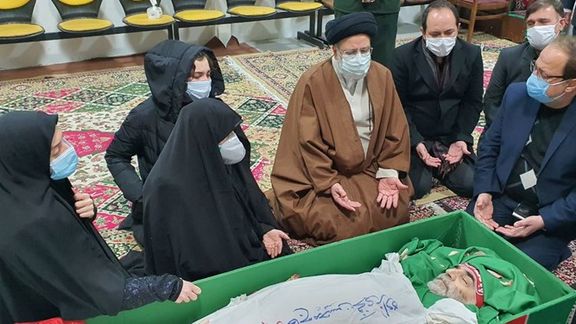
In another part of his interview, Kamalvandi hailed what he called the “technological achievements” of Iran’s nuclear program, saying they have had positive impacts on “people’s living standards as well as on the country’s political and economic issues.” In fact, Iran's economy has tremendously suffered because of sanctions imposed for its nuclear program. In more than a decade, the country's economic growth has averaged zero.
However, Kamalvandi claimed that the sanctions have turned into “a strong point for the country and the nuclear industry.”
Over the past six years, the rial, Iran’s national currency, has fallen 15-fold, fueling inflation and plunging millions of citizens into poverty. Eqtesad 24 news website reported in February that almost one in every three Iranians is currently living below the poverty line as a result of very high inflation in the past five years.
Reports received earlier in March by Iran International indicate a significant drop in people’s purchasing power and the elimination of many food items in their diets, including red meat, chicken, and fish. According to Iranians newspapers, canned tuna prices have jumped by 113% in the past 12 months and prices for red meat by 100%.
Kamalvani also announced Tehran’s plans to “develop the capacity of Iran’s nuclear industry” and construct new nuclear power plants in the country.
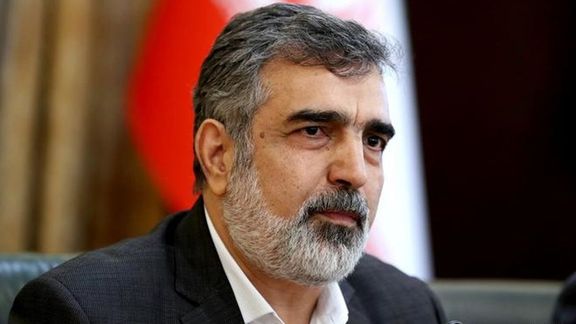
“To build a 1,000 megawatts nuclear plant requires an investment of about $5 billion. So when you are planning to add 20,000 megawatts of power to the grid, it requires a $100 billion investment,” said the spokesperson for Iran’s Atomic Energy Organization, further adding that Tehran cannot rely on domestic sources alone to further its nuclear projects.
Nevertheless, he did not specify which foreign funding sources the Iranian government would employ to achieve these ambitious goals. Most international investors are reluctant to do business in Iran due to sanctions and the country’s volatile political situation. What is clear is that Iran cannot afford to develop its nuclear energy sector on its own. In January, Vahid Shahri, an economics professor, warned that Iran’s economic needs total $500 billion is pushing the country towards “catastrophe.” In a desperate attempt to cover its expenses, the government has considerably increased taxes.
Citing growing relations between Tehran and Moscow, Kamalvani stated that Iran “has agreements with Russia” to build several nuclear power plants. “Bushehr plant has been delivered [by Russia] and two others are now under construction,” he went on to say.
In recent years, Tehran and Moscow have strengthened their political, military, communication, and cyber ties, prompting concerns among Western countries and their allies. Their cooperation has grown significantly, particularly since the Russian invasion of Ukraine in 2022.
Kamalvandi further hailed Iran’s efforts in the International Atomic Energy Agency (IAEA), saying despite “massive campaigns by opposing sides” in the IAEA, Tehran has been “generally successful” in its bid to lessen international pressures on the Islamic Republic and its nuclear program. “We are now in a situation where the IAEA does not play into our enemies’ hands and is not at their disposal the way they want,” he stressed.
Contrary to what the Iranian official alleges, the IAEA has been vocal about the irregularities and violations in Tehran’s nuclear program. During the recent Board of Governors’ meeting in Geneva earlier in the month, IAEA Director-General Rafael Mariano Grossi highlighted concerns, including the deactivation of surveillance devices, barring of senior inspectors, and refusal to disclose new nuclear facilities by the Iranian regime.
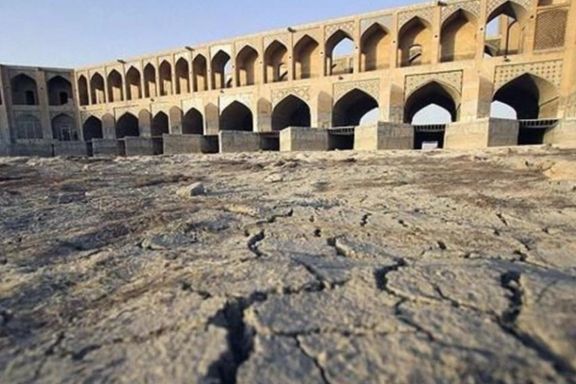
In its annual world water development report, the United Nations Water (UN-Water) announced that Iran is experiencing “extremely high-water stress.”
Entitled “Water for Prosperity and Peace,” the report was published this week on the occasion of World Water Day, held annually on March 22.
According to the report, Iran, along with Pakistan, Turkmenistan and India, are among the countries in the Asia-Pacific region that are grappling with extremely high-water stress. Furthermore, some other regional countries such as Turkey, Afghanistan, Nepal, Uzbekistan, Armenia and Kyrgyzstan are impacted by high-water stress.
The report defines baseline water stress as “the ratio of total water withdrawals to available renewable surface and groundwater supplies.”
The population in the Asia-Pacific region living under high or extremely high water scarcity drastically increased from 1.1 billion in 1975 to 2.6 billion in 2010, the report stated.
UN-Water also pointed out that Asia-Pacific is “the world’s most vulnerable region to disasters caused by natural hazards,” and therefore, water scarcity in the region and responses to it are further exacerbated by climate change.
“Asia accounts for nearly one third (31%) of weather-, climate- and water-related disasters reported globally, for nearly half (47%) of deaths, and nearly one third (31%) of associated economic losses,” read the UN report.
Globally, 25 countries with around 25% of the world’s population are experiencing extremely high water stress as they extract more than 80% of their annual renewable freshwater supply.
In November 2023, World Weather Attribution said human-induced climate change has played a major role in exacerbating a three-year drought in Iran.
According to the latest figures, the volume of water in Iran’s dams over the past six months has decreased by 10 percent compared to the same period last year.